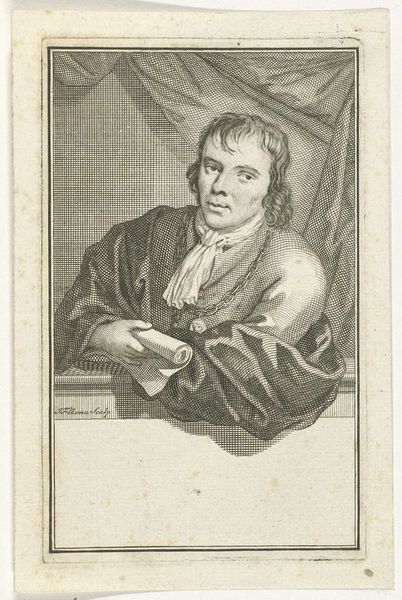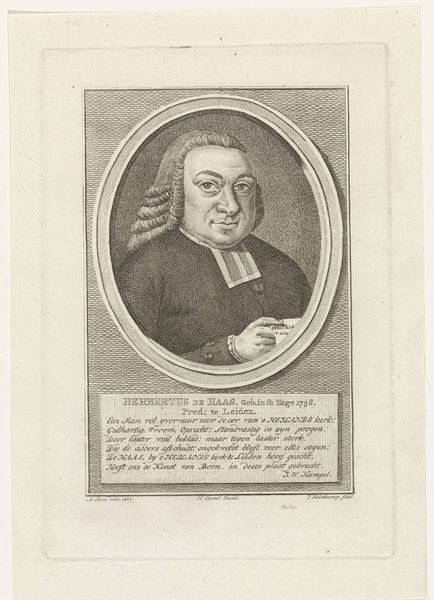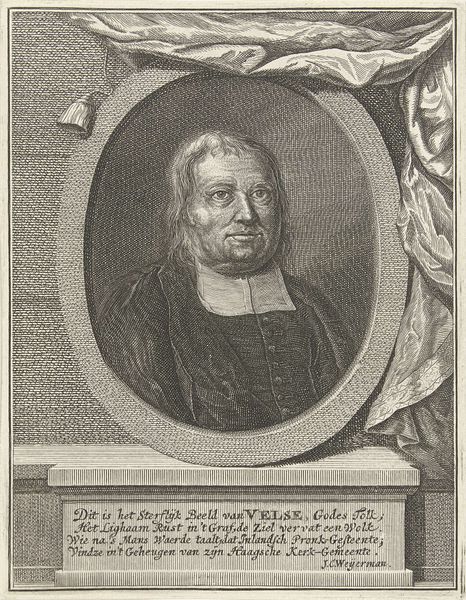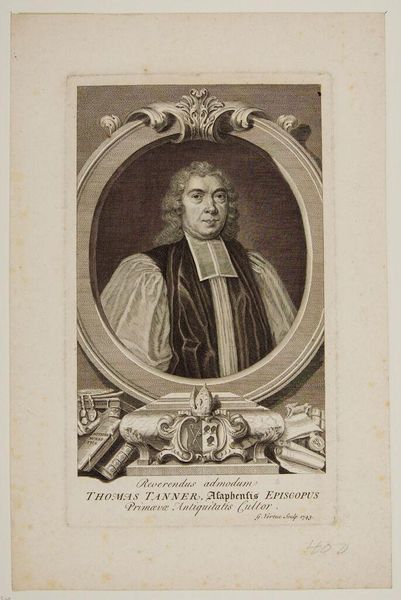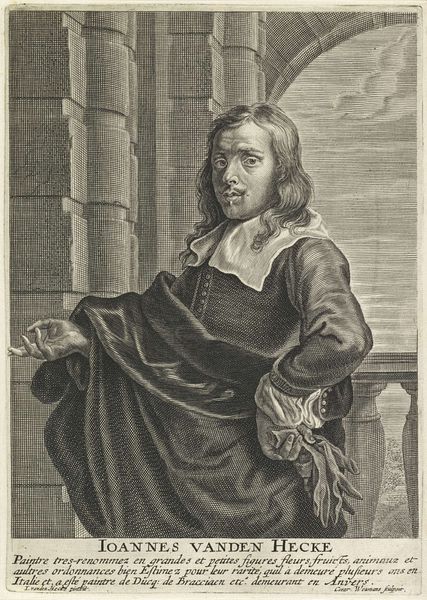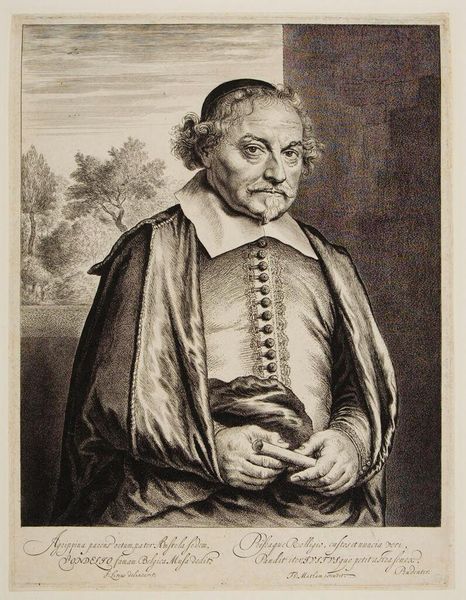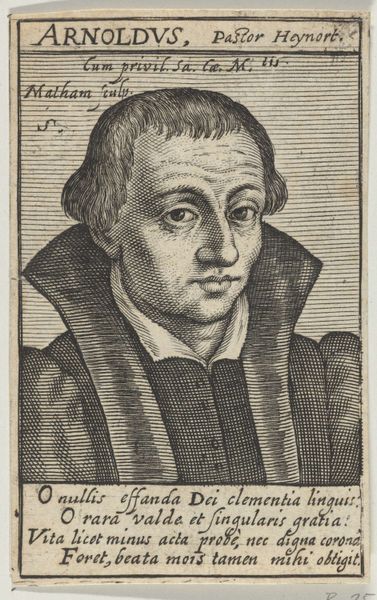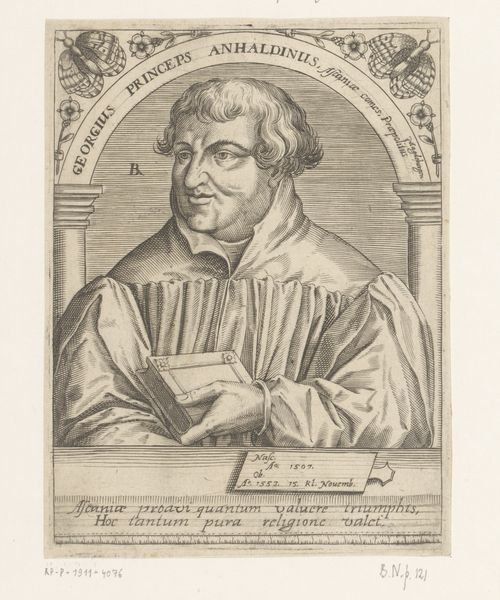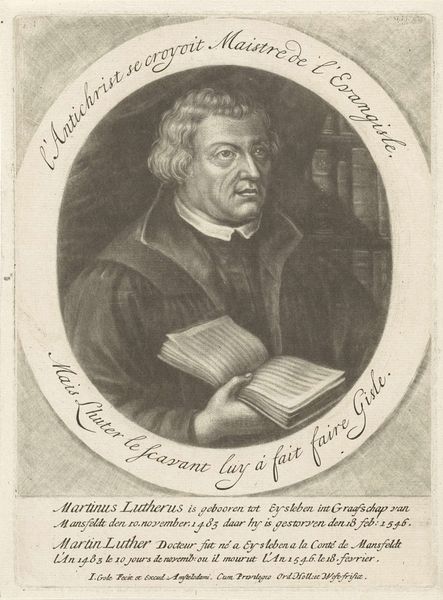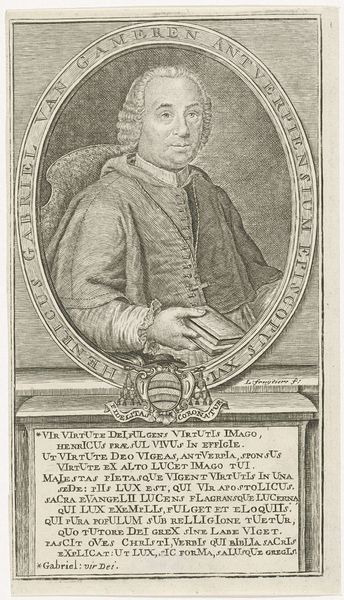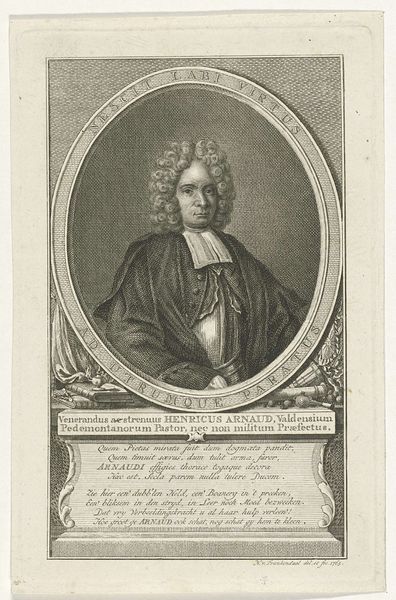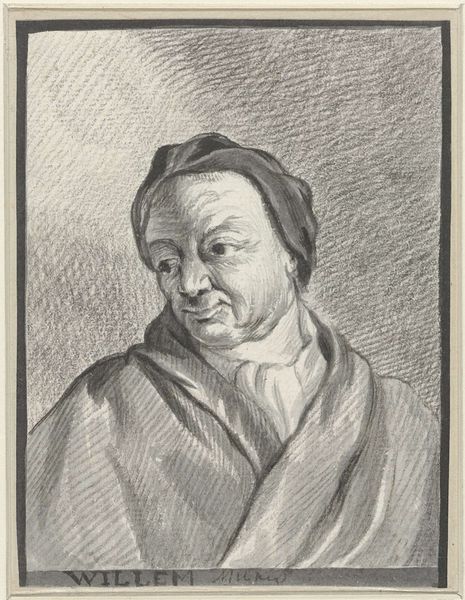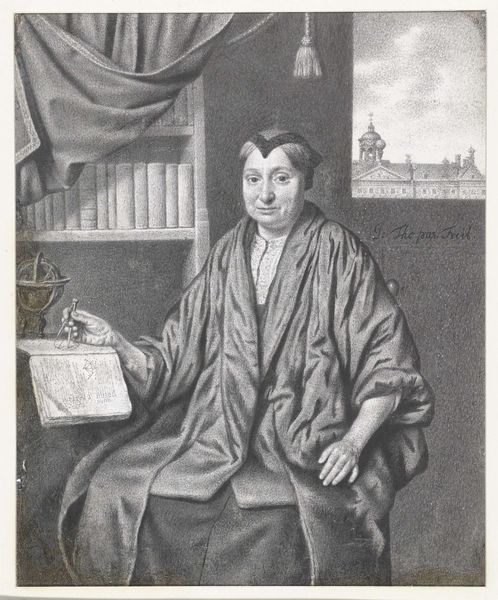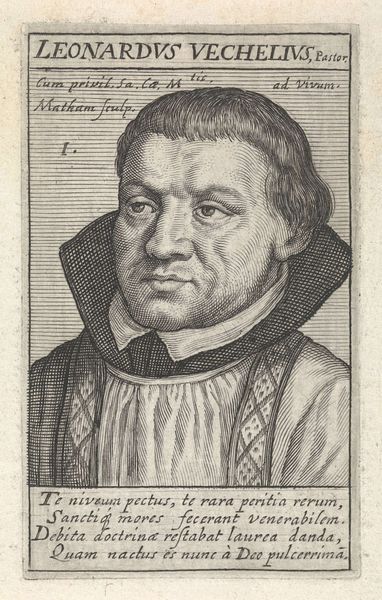
print, engraving
#
portrait
#
baroque
# print
#
old engraving style
#
engraving
Dimensions: height 140 mm, width 87 mm
Copyright: Rijks Museum: Open Domain
Jacob Folkema created this portrait of Reyer Anslo using engraving, a printmaking technique dating back to the 15th century. The process begins with a metal plate, usually copper, into which the artist carefully incises lines using a tool called a burin. The depth and thickness of these lines determine the amount of ink the plate holds, and therefore the darkness of the printed line. See how Folkema has created a range of tones, from the deep shadows in Anslo's cloak to the delicate shading of his face. The precision of engraving allowed for detailed reproduction and distribution of images. In this context, printmaking facilitated the circulation of portraits, reinforcing social hierarchies and celebrating individual achievement. Note the labor-intensive nature of this craft, demanding patience and skill, reflecting a pre-industrial mode of production. By attending to the material process of engraving, we gain a deeper understanding of the cultural values embedded in this portrait, bridging the gap between craft and fine art.
Comments
No comments
Be the first to comment and join the conversation on the ultimate creative platform.
